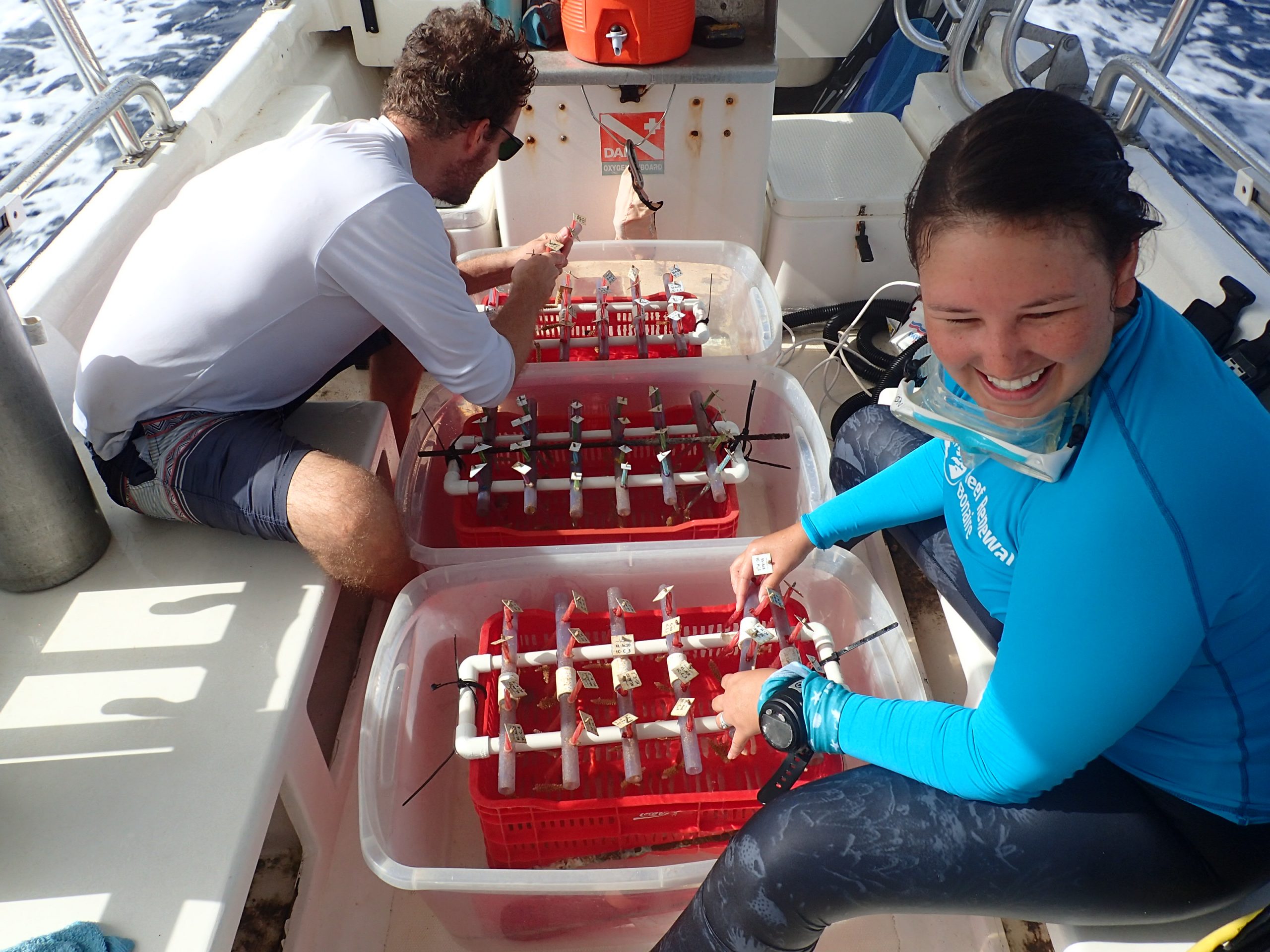Coral “stress hardening” (exposing corals to moderately stressful conditions with the goal of increasing their stress tolerance) has the potential to increase coral resilience and the long-term success of coral restoration efforts. For example, nursery sites could be selected for environmental conditions expected to better prepare corals for stressors that they may experience after outplanting. However, this strategy has not yet been assessed within an active coral restoration program.
In collaboration with Reef Renewal Foundation Bonaire (RRFB), Ph.D. candidate Serena Hackerott has recently begun a study to explore the influence of coral nursery sites on coral performance and stress tolerance. Throughout the project, Serena will monitor staghorn corals (Acropora cervicornis) of three genotypes, or identical genetic “strains”, at two RRFB sites. The two sites were selected based on differences in environmental conditions and coral growth rates documented in her previous study conducted in collaboration with RRFB. Additionally, corals of each genotype have been living at each site for multiple years, providing a unique opportunity to compare coral clones (i.e., of the same genotype) with different environmental histories.
Serena and EELab undergraduate student Wendy Páez recently traveled to Bonaire to initiate the first step of this project. With no direct flights between the US and Bonaire, the trip began with an exciting ride from Curacao to Bonaire in a small Divi Divi flight where Wendy actually flew right next to the pilot! After arriving, Serena and Wendy constructed a temporary aquarium system in front of the RRFB office to expose corals to different thermal challenge temperatures across three repeated experimental trials. While conducting experiments on a small island will inevitably involve some unforeseen challenges, a few trips to the local hardware store and some of marine biologists’ most essential tools of cable ties, PVC pipe, and duct tape had the heat stress system working smoothly. Each acute trial lasted 18-hours, which required some late nights and early mornings to continually monitor the system. However, these long hours will provide an important first measurement of the thermal tolerance of coral clones from different sites.
The coral samples collected after each thermal challenge were analyzed by Jack Howard, an undergraduate student visiting the EELab for the summer as a part of the FIU Coastal Ecosystems Research Experience for Undergraduates (REU) program, mentored by Serena. Jack and Serena characterized the amount of coral bleaching experienced by each coral by calculating a quantitative color score based on photos of each coral, as well as by measuring the chlorophyll-a concentration within each coral sample. Preliminary results have shown differences in coral bleaching (and thermal tolerance) between genotypes and also between corals of the same genotype living at different sites.
This data will provide a baseline for the next phase of the project, including a reciprocal transplant of corals between the two study sites to explore coral environmental memory within restoration. The overall goal of the study is to improve long-term coral restoration outcomes by describing the effect of previous environmental experiences within coral nurseries on coral resilience and to evaluate the persistence (or “memory”) of this effect following transplantation.
This work has been made possible by support from Reef Renewal Foundation Bonaire, FIU CREST-CAChE, the Friends of Gumbo Limbo Nature Center, The Lerner-Gray Fund for Marine Research, and the Iberostar Wave of Change Rebuilding Coral Reefs Scholarship.













